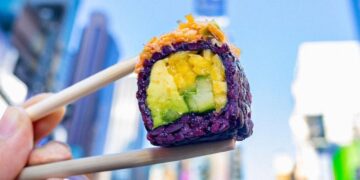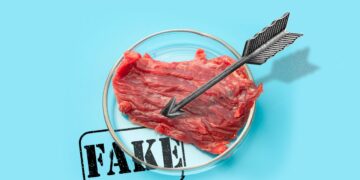[ad_1]
The night earlier than the primary day’s judging of the Previous Mutual Trophy Wine Present is historically the event for the annual Previous Wine Tasting. The occasion dates again to the early 2000s and was initially initiated in order that an array of outdated wines which I had assembled for an article commissioned by The World of High quality Wine could possibly be shared as extensively as attainable. Given issues in regards to the measurement of the “bubble” on the time of the judging final 12 months, and once more this 12 months, we’ve now gone two years because the outdated wines collected for this event have been uncovered to any sort of scrutiny. Accordingly I made a decision that I’d collect up a couple of bottles and serve them to the panellists over dinner after the primary day’s judging on the finish of Could.

As at all times there have been a couple of disappointments, wines which can by no means have impressed or which had been stored too lengthy. However the standout wine within the line-up was a 1968 Chateau Libertas. On paper it didn’t look all that promising: an ullage of over 5cm, and a provenance which urged it had tracked the vagaries of local weather change for a full half century with none sort of insulation or safety from the weather. Regardless of the chances stacked in opposition to it, it was fabulous, and it confirmed no indicators of fading even by the point we had reached the top of the bottle.
Inevitably there was a dialogue in regards to the wine itself, however extra extensively, about the way in which wines have been made then and whether or not any of the vastly costlier icon wines produced at this time would survive into the second half of the 21st century. Among the group – which included the editor of WineMag – went as far as to say that, wanting on the historical Chateau Libertas, the trendy wine trade had “misplaced its method.”
Lining up the greats of the previous with these of the current is a fruitless train, the equal of evaluating Don Bradman and AB de Villiers, or Muhammad Ali and Rocky Marciano. Fifty years in the past all the pieces was totally different – not merely the climate patterns. Surprisingly little was identified in regards to the chemistry of wine manufacturing (and far of what identified wasn’t essentially a part of the curriculum for winemakers within the Cape.) All fermentations have been most likely pure – inoculation with commercially produced yeasts typically dates from the Nineteen Seventies. The mechanism of malolactic fermentation was solely correctly understood at the start of the Sixties. Producers by no means had entry to classy laboratory analyses, and doubtless wouldn’t have identified what to do with the knowledge. It was winemaking just about by the seat of your pants.
It’s after all spectacular that so a lot of these wines have each developed, and survived. They’d freshness from the outset and this appears to have contributed to their longevity at this time. They have been decrease in alcohol – typically 12% or much less – however they weren’t “inexperienced” after they have been launched: they have been industrial wines, produced in portions giant sufficient to fulfill the calls for of a rising wine market. A lot of what went into the Chateau Libertas mix of the Sixties was cinsault, harvested primarily from bush-vine vineyards. Arguably that is what gave the 1968 its longevity and its steadiness: naturally decrease yielding dry-land vineyards not pressured by trellising to crank out extra fruit than they may sustainably produce.
This makes the Mullineux’s Leeu Passant current-day enterprise a very attention-grabbing foil for this debate. On paper the Dry Purple is modelled on the outdated type Cape mix mannequin – Chateau Libertas or Rustenberg Dry Purple – replete with claims about historical winery yeasts, and co-fermentations of the type practised in South Africa on the time. They’re actually probably the most genuine try to return to the crossroads at which the trade is presumed to have taken the improper turning.
Tasting their newest releases I very a lot doubt that their Leeu Passant wines will ever end up just like the classics from the Sixties and Nineteen Seventies. For a begin, it might be not possible to show again the clock: winemaking at this time can by no means be the way in which it was in that extra rustic, prelapsarian period, even when a few of the grapes which go into their Dry Purple have been harvested from severely outdated bush-vine vineyards. Additionally it is attainable to argue that what makes them ring a bell for therefore many individuals is the concept of what’s being tried. If this assumption is appropriate, their attraction is vested in a type of nostalgia: we want them to change into nice as a result of we want our idealised sense of the previous to change into a actuality.
There’s no doubting the curiosity worth in what the Mullineuxs are doing – and this needs to be ample purpose for these well-heeled sufficient to purchase their Dry Purple. (For my cash I’d quite purchase the Chardonnay, the Wellington Cinsault, and maybe the Stellenbosch Cabernet.) Cellaring the Dry Purple for the specific goal of rediscovering the previous is a idiot’s errand: the “good outdated days” have been by no means all that good – it’s higher to look ahead. Clive James mentioned it completely: “What’s gone is gone, candy prince, what’s performed is completed”.
- Michael Fridjhon has over thirty-five years’ expertise within the liquor trade. He’s the founding father of Winewizard.co.za and holds varied positions together with Visiting Professor of Wine Enterprise on the College of Cape City; founder and director of WineX – the most important shopper wine present within the Southern Hemisphere and chairman of The Previous Mutual Trophy Wine Present.
Assist us out. Should you’d like to indicate a bit love for impartial media, we’d drastically respect it. To make a monetary contribution, click on here. Bill accessible upon request – contact information@winemag.co.za
[ad_2]
Source link







